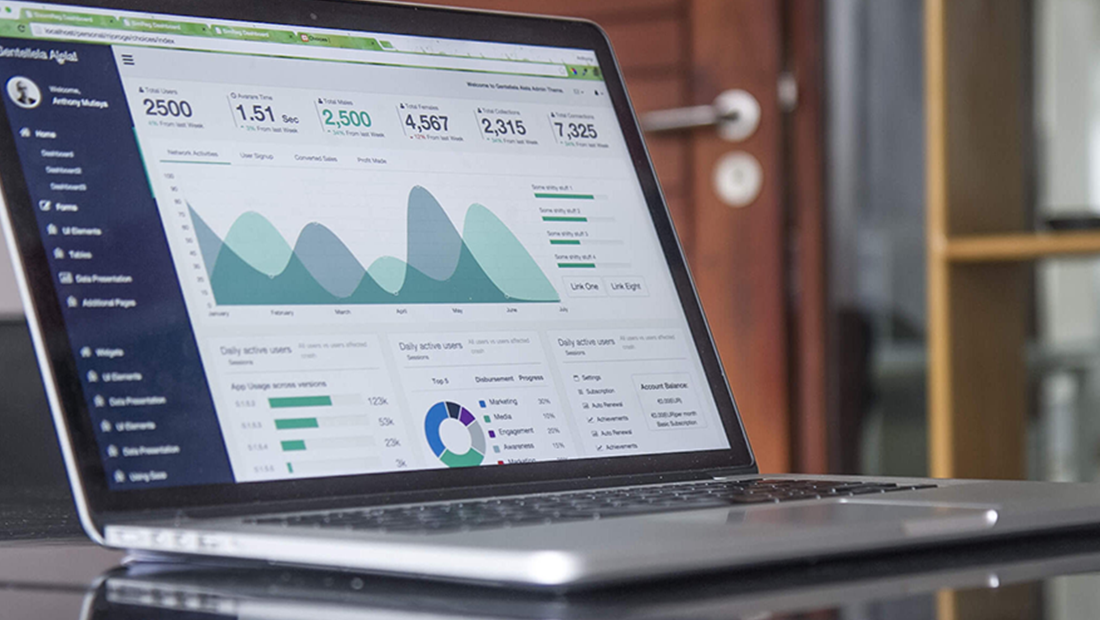
One of the most important things in business is to be consciously aware of how your market place is progressing technology wise. Digital is an ever changing landscape and something that many business people neglect through abdication and lack of focus. We at Avalanche Enterprise wanted to put together this document to show you some of the mind blowing stats that are coming out of our campaigns as well as some of the well known digital brands. Enjoy, use and learn from these!
SOCIAL MEDIA
FACEBOOK:
- Only about 22% of businesses are satisfied with their conversion rates. (Econsultancy, 2016)
- 72% of adult internet users use Facebook. (Pew Research Center, 2015)
- Only 45% of marketers think that their Facebook efforts are effective. (Social Media Examiner, 2015)
- Facebook posts with images see 2.3X more engagement than those without images. (Buzzsumo, 2015)
- Facebook continues to have the most engaged users — 70% log on daily, including 43% who do so several times a day. (Pew Research Center, 2015)
- Facebook sends 82% of social media traffic to longer stories and 84% of social traffic to shorter news articles. (Pew Research Center, 2016)
- 63% of Facebook and Twitter users say each platform serves as a source for news about events and issues outside the realm of friends and family. (Pew Research Center, 2015)
- 73% of people say they use Facebook for professional purposes. (HubSpot, 2016)
- In the past two years, content consumption on Facebook has increased 57%. (HubSpot, 2016)
- 76% of people use their Facebook feed to find interesting content. (HubSpot, 2016)
- Facebook has 1.13 billion daily active users. (Statista, 2016)
- Over 73% of people suggest that now use Facebook for professional purposes. (Avalanche Enterprise 2017)
- Facebook has an organic reach of less than 2% (Avalanche Enterprise 2017)
- Facebook under-delivers on its ‘estimated reach’ over 95% of the time. (Avalanche Enterprise 2017)
- 4/10 people successfully respond on Facebook (E Consultancy 2016)
INSTAGRAM:
- On Instagram, photos showing faces get 38% more Likes than photos not showing faces. (Georgia Institute of Technology, 2014)
- 28% of adult internet users use Instagram. (Pew Research Center, 2015)
- 59% of Instagram users are on the platform daily, including 35% who visit several times a day. (Pew Research Center, 2015)
- Instagram has 500 million monthly active users. (Statista, 2016)
- Over 95 million photos and videos are shared on Instagram every day. (Instagram, 2016)
LINKEDIN:
- 25% of adult internet users use LinkedIn. (Pew Research Center, 2015)
- LinkedIn is the only major social media platform for which usage rates are higher among 30- to 49-year-olds than among 18- to 29-year-olds. (Pew Research Center, 2015)
- 46% of online adults who have graduated from college are LinkedIn users, compared with just 9% of online adults with a high school diploma or less. (Pew Research Center, 2015)
- 32% of employed adults are LinkedIn users, compared with 14% of online adults who are not employed. (Pew Research Center, 2015)
- In the past two years, content consumption on LinkedIn has increased 21%. (HubSpot, 2016)
- LinkedIn has 450 million members, but only 25% actively visit the professional social network each month. (Avalanche Enterprise 2016)
SNAPCHAT:
- Snapchat has 150 million daily active users. (Statista, 2016)
- Every second, 8,796 photos are shared on Snapchat. (CEWE Photoworld, 2016)
- 52% of Snapchat users are under the age of 25. (Statista, 2016)
- 30% of U.S. millennial internet users use Snapchat regularly. (eMarketer, 2015)
TWITTER:
- 23% of adult internet users use Twitter. (Pew Research Center, 2015)
- 3 in 10 online urban residents use Twitter, compared with 21% of suburbanites and 15% of those living in rural areas. (Pew Research Center, 2015)
- 30% of online adults under 50 use Twitter, compared with 11% of online adults ages 50 and older. (Pew Research Center, 2015)
- Twitter accounts for 16% of referrals to longer articles from social sites and 14% for shorter news articles. (Pew Research Center, 2016)
- Twitter has nearly 4X as many users internationally as in the U.S. (Pew Research Center, 2016)
- In the past two years, content consumption on Twitter has increased 25%. Twitter has 313 million monthly active users. (HubSpot, 2016)
YOUTUBE:
- 400 hours of video are uploaded to youtube every 60 seconds (Avalanche Enterprise 2017)
- Amount of hours uploaded increased 800% in last 4 years on Youtube (Smart Insights)
General Social Media Management

- 88% of marketers want to know how to measure their return on investment for social media activities. (Social Media Examiner, 2015)
- Only 42% of marketers say they are able to measure their social activities. (Social Media Examiner, 2015)
- 92% of marketers say that social media is important to their business. (Social Media Examiner, 2015)
- More than half of marketers who’ve been using social media for at least two years report it helped them improve sales. (Social Media Examiner, 2015)
- 90% of all marketers indicated that their social media efforts have generated more exposure for their businesses. (Social Media Examiner, 2015)
- By spending as little as six hours per week, 66% of marketers see lead generation benefits with social media. (Social Media Examiner, 2015)
- At least 61% of those investing a minimum of six hours per week in social media marketing saw improvements in search engine rankings. (Social Media Examiner, 2015)
- 6 in 10 small business owners are not able to track ROI from their social media activities. (eMarketer, 2015)
- 64% of marketers are using social media for six hours or more and 41% for 11 or more hours weekly. (Social Media Examiner, 2015)
- Nearly 19% of marketers spend more than 20 hours each week on social media. (Social Media Examiner, 2015)
- 83% of all marketers actively pursue social media marketing initiatives. (Aberdeen, 2016)
- As of 2015, 35% of all those 65 and older report using social media, compared with just 2% in 2005. (Pew Research Center, 2015)
- As of 2015, 90% of young adults use social media, compared with 12% in 2005. (Pew Research Center, 2015)
- Nearly one-third of the world uses social networks regularly. (eMarketer, 2016)
- People are on with their phones over 22 hours a day (Avalanche Enterprise 2017)
- Visual content is 40X more likely to get shared on social media than other types of content. (Buffer, 2014)
- Articles with an image once every 75-100 words got double the number of social shares than articles with fewer images. (Buzzsumo, 2015)
- 71% of online marketers use visual assets in their social media marketing. (Social Media Examiner, 2015)
- Researchers found that colored visuals increase people’s willingness to read a piece of content by 80%. (Xerox, 2014)
- Research has shown that when people hear information, they are likely to remember only 10% of that information three days later. However, if a relevant image is paired with that same information, people retained 65% of the information three days later. (LifeLearn, 2015)
- Infographics are liked and shared on social media 4X more than any other type of content. (Avalanche Enterprise 2017)
- 16% of UK adults will never complain in person (Trustpilot 2016)
SEO/Conversion Rate

- The first position on Google search results on desktop has a 34.36% clickthrough rate. (Advanced Web Ranking, 2015)
- Only about 22% of businesses are satisfied with their conversion rates. (Econsultancy, 2016)
- The first position on Google search results on mobile has a 31.35% clickthrough rate. (Advanced Web Ranking, 2015)
- For every $92 spent acquiring customers, only $1 is spent converting them. (Econsultancy, 2016)
- 81% of shoppers conduct online research before making big purchases. (Retailing Today, 2014)
- 44% of people go directly to Amazon to start their product searches, compared to 34% who use search engines like Google, Bing, and Yahoo to search for products. (Marketing Land, 2015)
- Mobile commerce makes up 30% of all U.S. ecommerce. (Internet Retailer, 2015)
- 72% of consumers who did a local search visited a store within five miles. (WordStream, 2016)
- 30% of mobile searches are related to a location. (Google, 2016)
- 28% of searches for something nearby result in a purchase. (Google, 2016)
- Local searches lead 50% of mobile visitors to visit stores within one day. (Google, 2014)
- 78% of local-mobile searches result in offline purchases. (Search Engine Land, 2014)
- More Google searches take place on mobile devices than on computers in 10 countries including the U.S. and Japan. (Google, 2015)
- 49% of B2B researchers who use their mobile devices for product research do so while at work. (Google, 2015)
- 65% of smartphone users agree that when conducting a search on their smartphones, they look for the most relevant information regardless of the company providing the information. (Google, 2015)
- 51% of smartphone users have discovered a new company or product when conducting a search on their smartphone. (Google, 2015)
- 48% of consumers start mobile research with a search engine. (Smart Insights, 2016)
- 26% of consumers start mobile research with a branded app. (Smart Insights, 2016)
- Organic Search Google gets over 100 billion searches a month. (Mashable, 2015)
- The average Google first page result contains 1,890 words. (Backlinko, 2016)
- 50% of search queries are four words or longer. (WordStream, 2016)
- 66% of marketers say improving SEO and growing their organic presence is their top inbound marketing priority. (HubSpot, 2016)
- 71% of B2B researchers start their research with a generic search. (Google, 2015)
- B2B researchers do 12 searches on average prior to engaging on a specific brand’s site. (Google, 2014)
- 72% of marketers say relevant content creation was the most effective SEO tactic. (Ascend2, 2015)
- 40% of marketers say the most challenging obstacle to search engine optimization success is changing search algorithms. (Ascend2, 2015)
- Voice Search 19% of people use Siri at least daily. (HubSpot, 2015)
- 37% use Siri, 23% use Microsoft’s Cortana AI, and 19% use Amazon’s Alexa AI at least monthly. (HubSpot, 2015)
- 20% of search queries on Google’s mobile app and on Android devices are voice searches. (Search Engine Land, 2016)
- 60% of smartphone users who use voice search have begun using it within the past year, with 41% of survey respondents having only begun to use voice search in the past six months. (Search Engine Land, 2015)
- 43% of mobile voice search users do so because they say it is quicker than going on a website or using an app. (Statista, 2015)
- 21% of mobile voice search users do so because they say they don’t like typing on their mobile. (Statista, 2015)
Content:

- 51% of UK searchers can’t spot a paid ad.
- 18% of searchers think that if a website has been listed it must be accurate and unbiased.
- UK newspapers lose £155m in print advertising
- 60% of marketers say blog content creation is their top inbound marketing priority. (HubSpot, 2016)
- 1 in 10 blog posts are compounding, meaning organic search increases their traffic over time. (HubSpot, 2016)
- Compounding blog posts make up 10% of all blog posts and generate 38% of overall traffic. (HubSpot, 2016) Over its lifetime, one compounding blog post creates as much traffic as six decaying posts. (HubSpot, 2016)
- Companies that published 16+ blog posts per month got almost 3.5X more traffic than companies that published 0-4 monthly posts. (HubSpot, 2015)
- B2B companies that blogged 11+ times per month had almost 3X more traffic than those blogging 0-1 times per month. (HubSpot, 2015)
- B2C companies that blogged 11+ times per month got more than 4X as many leads than those that blog only 4-5 times per month. (HubSpot, 2015)
- Companies that published 16+ blog posts per month got about 4.5X more leads than companies that published 0-4 monthly posts. (HubSpot, 2015)
- 75% of HubSpot’s blog views and 90% of blog leads come from old posts. (HubSpot, 2014)
- Some 15% of internet users read or comment on discussion forums such as reddit, Digg, or Slashdot, while 10% use the blogging website Tumblr. (Pew Research Center, 2015)
- 43% of people admit to skimming blog posts. (HubSpot, 2016)
- Titles with 6-13 words attract the highest and most consistent amount of traffic. (HubSpot, 2016)
- LinkedIn’s organic blog reach has been less than 3% in 2017. (Avalanche Enterprise 2017)
- On average, B2B marketers allocate 28% of their total marketing budget to content marketing. (Content Marketing Institute, 2015)
- Only 30% of B2B marketers say their organizations are effective at content marketing, down from 38% last year. (Content Marketing Institute, 2015)
- 55% of B2B marketers say they are unclear on what content marketing success or effectiveness looks like. (Content Marketing Institute, 2015)
- 32% of B2B marketers say they have a documented content marketing strategy. (Content Marketing Institute, 2015)
- 28% of B2B marketers say they have a documented editorial mission statement. (Content Marketing Institute, 2015)
- 47% of buyers viewed 3-5 pieces of content before engaging with a sales rep. (Demand Gen Report, 2016)
- 96% of B2B buyers want content with more input from industry thought leaders. (Demand Gen Report, 2016)
- 8% of marketers plan to add Medium to their marketing efforts in the next 12 months. (Avalanche Enterprise 2017)
- 4X as many customers would rather watch a video about a product than read about it. (Animoto, 2015)
- Almost 50% of internet users look for videos related to a product or service before visiting a store. (Google, 2016)
- 53% of smartphone users feel more favorable towards companies whose mobile sites or apps provide instructional video content. (Google, 2015)
- 4 in 5 consumers believe that demo videos are helpful. Shoppers who view video are 1.81X more likely to purchase than non-viewers. (Animoto, 2015)
- Social Video 39% of marketers plan to add Facebook video to their content strategy in the next year. (Adobe, 2015)
- 45% of people watch more than an hour of Facebook or YouTube videos a week. (HubSpot, 2016)
- 100 million hours of video are watched every day on Facebook. (TechCrunch, 2016)
- 82% of Twitter users watch video content on Twitter. (Twitter, 2015)
- 90% of Twitter video views are on mobile. (Twitter, 2015)
- Video Analytics 55% of people consume video content thoroughly. (HubSpot, 2016)
- 43% of people want to see more video content from marketers. (HubSpot, 2016)
- Marketers who use video grow revenue 49% faster than non-video users. (Aberdeen, 2015)
- Nearly two-thirds of consumers prefer video under 60 seconds. (Animoto, 2015)
- 51.9% of marketing professionals worldwide name video as the type of content with the best ROI. (Adobe, 2015)
- YouTube 48% of marketers plan to add YouTube to their content strategy in the next year. (HubSpot, 2016)
- On mobile alone in an average week, YouTube reaches more 18+ year-olds during prime time TV hours than any cable TV network. (Google, 2016)
- Two-thirds of YouTube users watch YouTube on a second screen while watching TV at home. (Google, 2016)
- YouTube is more commonly used by larger businesses. For example, 71% of businesses with 100+ employees use YouTube, compared to 38% of the self-employed. (Social Media Examiner, 2015)
- YouTube has over a billion users, almost one-third of all people on the Internet. (YouTube, 2016)
- In an average month, 8 out of 10 18- to 49-year-olds watch YouTube. (Google, 2016)
- Among millennials, YouTube accounts for two-thirds of the premium online video watched across devices. (Google, 2016)
- The time people spend watching YouTube on their TV has more than doubled year over year. (Google, 2016)
- 87% of internet users now have a smartphone (Global Web Index)
- The spending on digital ads will surpass that on search ads in the US (eMarketer)
- 26% of salespeople don’t know what a CRM is. (Avalanche Enterprise, 2017)
- 17% of salespeople cite manual data entry as the biggest challenge using their existing CRM. (HubSpot, 2016)
- Only 21% of salespeople consider their CRM software’s integration capabilities with marketing software or other tools to be high quality. (HubSpot, 2016)
- 40% of salespeople still use informal means such as Microsoft Excel or Outlook to store its lead and customer data. (HubSpot, 2016)
- 29% of salespeople are spending an hour or more on data entry each and every day. (HubSpot, 2016)
- Nearly half (45%) of companies are using some form of CRM to store lead data, and 84% of those companies have a standard in place for scoring lead quality. (DMN News, 2014)










